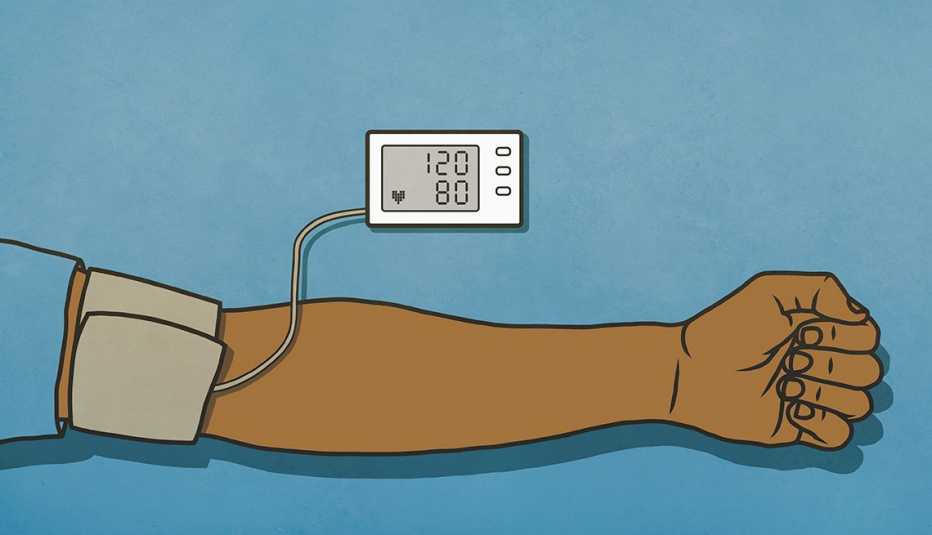AARP Hearing Center


High blood pressure, diabetes, arthritis and heart disease top the list of health conditions concerning Black men 50 and older, according to a recent AARP survey on the health of older African Americans. Experts say these fears are not unfounded.
“The problem is real, the concern is real,” says Omofolarin Fasuyi, M.D., an assistant professor of family medicine at Morehouse School of Medicine in Atlanta. “We have disparities across the spectrum of both physical and mental health issues in the Black population.”
Black adults in the U.S. are 30 percent more likely than their white counterparts to have high blood pressure, according to the U.S. Department of Health and Human Services’ Office of Minority Health, and they’re 60 percent more likely to be diagnosed with diabetes. Both conditions are risk factors for heart disease, which is more likely to kill Black men than white men, research shows.
The reason for these disparities, experts say, can be attributed to a range of factors. Some of it may be biological, Fasuyi says, but other forces — including economic opportunities, structural racism and medical mistrust — are also at play.
Although you can’t control your genetics or swiftly and single-handedly change systemic issues, there are several things individuals can do to help lower their risk of being diagnosed with these chronic diseases.
“There are things that are in our control, and there are things that are out of our control,” says Sachin Shah, M.D., associate professor of medicine at University of Chicago Medicine. “We really need to focus on our modifiable risk factors, the things that are in our control.” Here are seven steps that three experts recommend:
1. Lower the amount of sodium in your diet.
Do this, and your blood pressure will follow.
According to the American Heart Association, the average American consumes about 3,400 milligrams of sodium per day — more than twice the recommended daily intake of 1,500 mg.
Cutting back doesn’t necessarily mean you need to toss the saltshaker; most of the sodium we consume comes from packaged and prepared foods. Though avoiding these foods can be difficult — especially for people who don’t have access to fresh, healthy options, or those strapped for time — curbing your intake by even 1,000 mg a day (the equivalent of 1 tablespoon of soy sauce or a few slices of thinly sliced deli meat) can significantly improve blood pressure, research shows.
2. Know your numbers.
If you’re aware that you have high blood pressure (that’s anything over 130/80 mm Hg) or worried you may be at risk, Shah suggests keeping a blood pressure cuff at home (you can find one for about $20) and staying on top of your numbers. You can also get free blood pressure readings at some pharmacies and retail stores.
High blood pressure, also referred to as hypertension, affects about 56 percent of Black adults in the U.S. and can be symptomless, so monitoring levels is key. Uncontrolled high blood pressure can lead to heart attack, heart failure, stroke and kidney disease.



































































More on Health
Black Adults Face Delays in Parkinson’'s Diagnosis, Care
One man living with the disorder offers advice on how to address the disparities
4 Questions to Ask Your Doctor About Your Heart
Knowledge is power when it comes to lowering your risk for the nation’s no. 1 killer
Black Americans are Dying too Young
A new study highlights a striking disparity